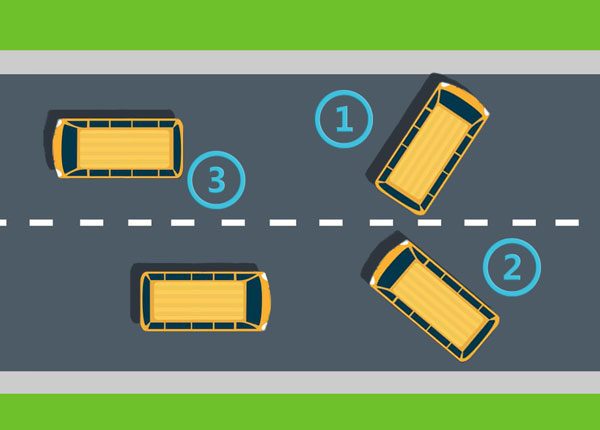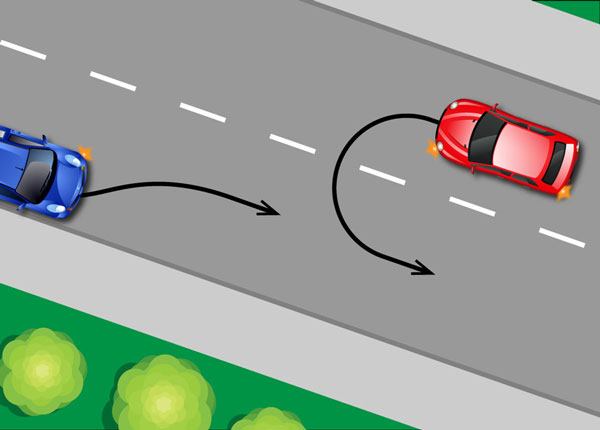
Center Turn Lane Rules: How To Make a Left Turn Safely & Avoid Traveling
Updated Oct. 30, 2020Center left turn lanes are also referred to as two-way left turn lanes. These lanes are designed to improve the flow of traffic at busy intersections, by allowing drivers to safely turn left without interfering with motorists traveling straight on. You will encounter center left turn lanes in the middle of a two-way street, outlined on both sides with painted yellow dividing lines.
You may use the two-way left turn lane when turning left onto the roadway from an alley or driveway. Below are the other rules you must consider when using the center turn lane.
Road signs and pavement markings
Center left turn lanes are easy to identify, as they are marked the same way everywhere. The start of the lane is usually always highlighted with a “CENTER LANE LEFT TURN ONLY” sign. Drivers who are approaching the intersection with the intention to drive straight through must merge out of this lane at the earliest opportunity.
The road markings used for a center left turn lane are distinctive and will not be seen elsewhere. Both outside lines are yellow, with the inner line broken and the outside line solid. Now that you know how to spot a two-way left turn lane, let’s talk about how they must be used.
How to use a center left turn lane
Drivers should adhere to the following guidelines when using a center left turn lane:
- 1

Check for opposing traffic in the center left turn lane.
Remember that drivers coming from both directions may use this lane. You must make sure there is space before proceeding. - 2

Make sure you are not being passed, using your mirrors and turning to check your blind spots.
- 3

Do not travel in the two-way left turn lane unless you intend to turn left.
Merge into the lane at the distance recommended in your state driving manual. Most official handbooks recommend joining a center left turn lane around 200 to 400 feet prior to the intersection. - 4

Keep your wheels straight until you begin to turn.
When it is safe to do so, enter the center left turn lane to complete the maneuver.
These rules apply when entering a two-way left turn lane from a driveway or alley:
- Activate your left turn signal to show your intention to turn onto the roadway. Wait for a safe gap before attempting to join the center left turn lane.
- Check that the lane is clear in both directions before pulling out onto the street.
- Once in the center lane you must merge into the adjacent lane at the next available opportunity, as traveling in the turn lane is prohibited. Do not attempt to use the center left turn lane as an acceleration lane.
Common mistakes
It is not uncommon to see inexperienced drivers using the center turn lane incorrectly, despite its purpose and the rules governing its use being quite straight forward. Make yourself aware of the restrictions concerning two-way left turn lanes and using it appropriately should be easy.
- 1

Do not travel in the center turn lane.
As we mentioned above, drivers may not travel further than 200 to 400 feet in this lane. This applies to drivers using the turn lane to enter the roadway, as well as those using it to turn. - 2

Do not pass other vehicles in the center turn lane.
As soon as you enter the center left turn lane, passing other vehicles is out of the question. Up ahead, motorists may have stopped or significantly slowed in preparation for a left turn. Attempting to pass could cause a collision. - 3

Do not park in the center left turn lane!
This might seem like an obvious restriction, but it happens occasionally none-the-less. If you experience a mechanical fault and need to pull your vehicle over, head for the right side of the road rather than stopping in the center lane.




